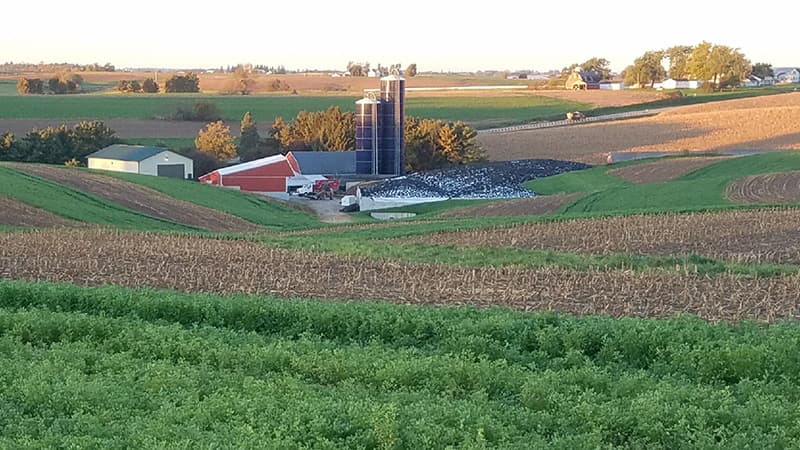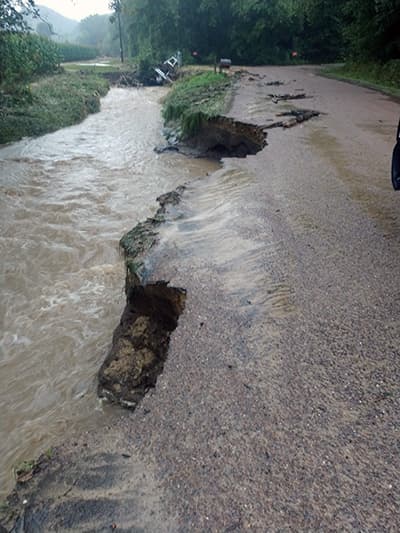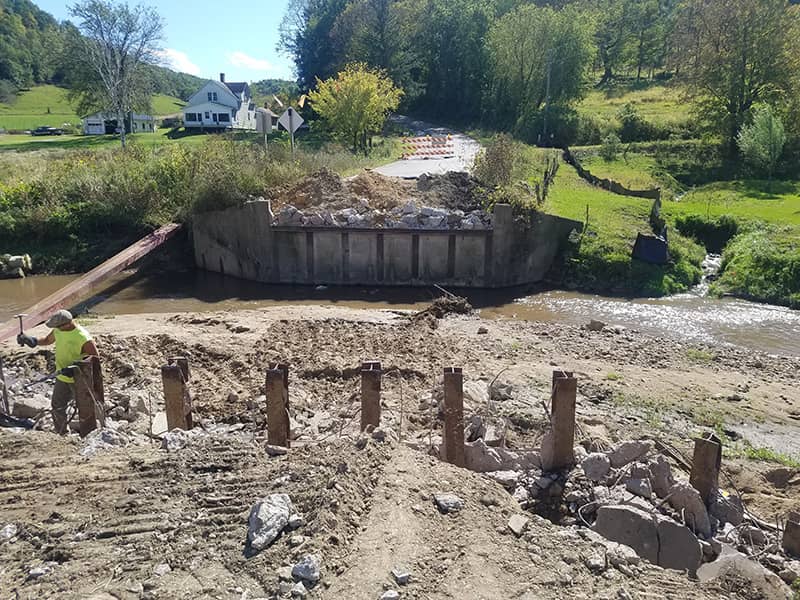Jack Herricks is a dairy farmer east of Cashton, Wisconsin, and a former Aldo-Leopold Conservation Farmer of the Year.

Our farm is a family operation, my wife and I, son and daughter and their spouses, a nephew and about 9 employees. We farm about 1,400 acres of crops and have about 600 dairy cows. My family has been here for 110 years. We are very strong advocates of conservation and having a good land ethic. I also am the Chairman for the Town of Jefferson, which was part of a federal disaster area in the years of 2017, 2018, and 2019. The flooding had a huge impact on the farm.
We are nestled into a valley setting where we farm the ridgetops. In 1964, my dad constructed a larger earthen dam structure to control the flooding. In all the years we lived here it wasn’t until the 2017 flood that saw water come over the emergency spillway. It went through the freestall barn and into our parlor and shut us down milking for about 6 hours. In the 2018 flood, it not only came over the emergency spillway but it topped the dam.

We can quantify the losses from milk production and the cost to clean up but the real unknown and the largest expense was the amount of topsoil we lost in that kind of event. We don’t have a way to quantify that. Thank goodness we have a lot of conservation practices in place — contour strips, grassed waterways and water retention structures. Having them helped prepare us for the big event.
We no-till our crops and have for about 35 years. Over that time, we’ve increased our organic matter in the soil from about 2 and a half percent to about 4 to 4.2 percent. That helped control flooding because for each percent of organic matter that your soil increases it has the capacity to hold about 1 inch more equivalent of rainfall. Farming on the contour, it helps to have hay and corn crop in rotation.
Our crops are located uphill from where our farmstead is so the field road structure that we’ve worked on over the years can actually shed water off it rather than letting it run down the road and wash it out. We have 13 different structures on our farm for water retention at the head of the valleys to help contain the water so it doesn’t have a chance to pool as much. So, it’s all the practices put together help support each other and help us weather that big event.
I don’t spend a lot of time worrying about future big events but it’s a concern. I wonder if is this going to be a once in a lifetime event or if we going to be faced with these big events more frequently.
While 2018 was a big event, there have been numerous other heavier and more frequent rains. It gives us a smaller window to plant, a smaller window to harvest, and forces us to invest in larger machinery so we can get more work done. In 2019, we only had 2.5 days in all of the month of May that we could plant corn. We are doing more than one operation at one time – making first crop hay and planting corn. That takes more manpower and more tractor power and adds another expense. It is another thing we have to deal with on our family farm.

Agriculture has really changed over my lifetime, one of the changes is that many, many dairy farms have gone out of business. There are still people living on the land but a lot of people are living on these farms that work in town and rent the farmland out to someone. When grain farmers move in, instead of rotating contour strips, they want to rotate the whole farm and move from one crop to another.
We need to re-establish more of a conservation ethic and caring for the land. Its reflective of what happened in the Coon Creek watershed in the ’30s. We needed a whole change of culture and have residents realize that we have to change how we live and farm and manage our land to make it more resilient.
The views and opinions expressed in this interview are those of the authors and do not represent official policy or position of the University of Wisconsin-Madison or the Wisconsin Initiative on Climate Change Impacts.
Background
Jack Herricks and his family have implemented a full menu of conservation practices on his farm through the Middle Kickapoo Watershed project, EQIP and DNR forestry programs. He is NACD Soil Health member and practices cover crops and no-till on his farm. He manages all his activities on the landscape with an eye on land stewardship.
Jack’s farm has been in the center of climate change impacts with many intense rain events, increased amounts of precipitation and the challenges of a long wet periods in managing his operation. He participates in many conservation-related committees along with the Monroe County Climate Change Task Force.